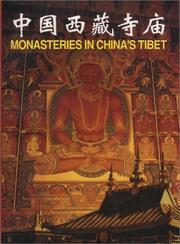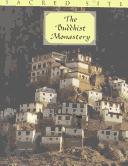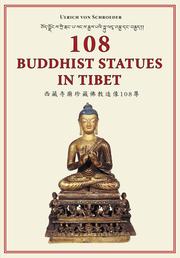| Listing 1 - 10 of 40 | << page >> |
Sort by
|
Book
ISBN: 0834815176 9780834815179 Year: 1984 Publisher: New York: Weatherhill,
Abstract | Keywords | Export | Availability | Bookmark
 Loading...
Loading...Choose an application
- Reference Manager
- EndNote
- RefWorks (Direct export to RefWorks)

ISBN: 7119019481 Year: 2001 Publisher: Beijing Foreign languages press
Abstract | Keywords | Export | Availability | Bookmark
 Loading...
Loading...Choose an application
- Reference Manager
- EndNote
- RefWorks (Direct export to RefWorks)
Book
ISBN: 3447391235 Year: 2021 Publisher: Wiesbaden : Harrassowitz Verlag,
Abstract | Keywords | Export | Availability | Bookmark
 Loading...
Loading...Choose an application
- Reference Manager
- EndNote
- RefWorks (Direct export to RefWorks)
Book
ISBN: 9622090672 Year: 1967 Publisher: Hong Kong : Hong Kong University Press,
Abstract | Keywords | Export | Availability | Bookmark
 Loading...
Loading...Choose an application
- Reference Manager
- EndNote
- RefWorks (Direct export to RefWorks)
Buddhist temples --- Buddhist monasticism and religious orders --- China --- Buddhist monasteries.
Book
ISBN: 1407358146 9781407358147 Year: 2022 Publisher: Oxford : BAR Publishing,
Abstract | Keywords | Export | Availability | Bookmark
 Loading...
Loading...Choose an application
- Reference Manager
- EndNote
- RefWorks (Direct export to RefWorks)
Space and Function is a study of Buddhist State Monasteries in medieval East Asia. The research is based on archaeological evidence and focuses on how the monastery’s layout developed with the evolution of Buddhist philosophy and practice.Building on earlier literature regarding the development of Buddhist monastery layouts, Dr He relies on his two decades of excavation experience of relevant monasteries in central China. His assessment of the development of state monasteries between the fifth and seventh century AD is examined in depth.Scholars interested in Buddhism, Chinese architecture, and the history of medieval China and East Asia will find this work informative and valuable.
Buddhist monasteries --- Excavations (Archaeology) --- History --- Buddhist architecture --- Archaeology, Medieval

ISBN: 8174360549 Year: 1998 Publisher: New Delhi : Lustre Press, Roli Books,
Abstract | Keywords | Export | Availability | Bookmark
 Loading...
Loading...Choose an application
- Reference Manager
- EndNote
- RefWorks (Direct export to RefWorks)
Description on Buddhist monasteries in Ladakh, Nepal, and Tibet accompanied with pictorial works.
Buddhist monasteries --- Monastères bouddhistes --- Pictorial works. --- Ouvrages illustrés

ISBN: 9781932476385 Year: 2008 Publisher: Chicago Serindia publications
Abstract | Keywords | Export | Availability | Bookmark
 Loading...
Loading...Choose an application
- Reference Manager
- EndNote
- RefWorks (Direct export to RefWorks)
Buddhist gods in art --- Buddhist monasteries --- Buddhist sculpture --- Metal sculpture
Book
ISBN: 8170308550 Year: 2007 Publisher: Delhi Sri Satguru publications
Abstract | Keywords | Export | Availability | Bookmark
 Loading...
Loading...Choose an application
- Reference Manager
- EndNote
- RefWorks (Direct export to RefWorks)
Buddhist monasteries --- History --- Thiksey Monastery (Ladākh, India) --- History.
Book
ISBN: 0812297679 0812252675 Year: 2021 Publisher: University of Pennsylvania Press
Abstract | Keywords | Export | Availability | Bookmark
 Loading...
Loading...Choose an application
- Reference Manager
- EndNote
- RefWorks (Direct export to RefWorks)
The vast majority of monasteries in Tibet and nearly all of the monasteries in Mongolia belong to the Geluk school of Tibetan Buddhism, best known through its symbolic head, the Dalai Lama. Historically, these monasteries were some of the largest in the world, and even today some Geluk monasteries house thousands of monks, both in Tibet and in exile in India. In Building a Religious Empire, Brenton Sullivan examines the school's expansion and consolidation of power along the frontier with China and Mongolia from the mid-seventeenth through the mid-eighteenth centuries to chart how its rise to dominance took shape.In contrast to the practice in other schools of Tibetan Buddhism, Geluk lamas devoted an extraordinary amount of effort to establishing the institutional frameworks within which everyday aspects of monastic life, such as philosophizing, meditating, or conducting rituals, took place. In doing so, the lamas drew on administrative techniques usually associated with state-making—standardization, record-keeping, the conscription of young males, and the concentration of manpower in central cores, among others—thereby earning the moniker "lama official," or "Buddhist bureaucrat."The deployment of these bureaucratic techniques to extend the Geluk "liberating umbrella" over increasing numbers of lands and peoples leads Sullivan to describe the result of this Geluk project as a "religious empire." The Geluk lamas' privileging of the monastic institution, Sullivan argues, fostered a common religious identity that insulated it from factionalism and provided legitimacy to the Geluk project of conversion, conquest, and expansion. Ultimately, this system succeeded in establishing a relatively uniform and resilient network of thousands of monasteries stretching from Nepal to Lake Baikal, from Beijing to the Caspian Sea.
Buddhist monasteries --- History. --- Monasteries, Buddhist --- Monasteries, Lamaist --- Monasteries --- Buddhist monasticism and religious orders --- Buddhist bureaucrat. --- Buddhist monasteries. --- Dalai Lama. --- Geluk school. --- History of Buddhism. --- Mongolia. --- Nepal. --- lama official.
Book
ISBN: 9789004278578 Year: 2015 Volume: 28 Publisher: Leiden ; Boston Brill
Abstract | Keywords | Export | Availability | Bookmark
 Loading...
Loading...Choose an application
- Reference Manager
- EndNote
- RefWorks (Direct export to RefWorks)
Buddhist monasteries --- Monastic and religious life (Buddhism) --- Meditation --- History. --- Buddhism --- History
| Listing 1 - 10 of 40 | << page >> |
Sort by
|

 Search
Search Feedback
Feedback About UniCat
About UniCat  Help
Help News
News